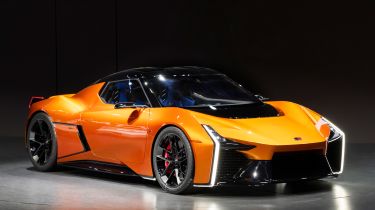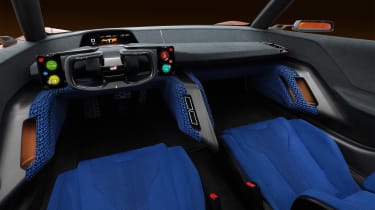New Toyota FT-Se concept has us weak at the knees
Toyota’s electric sports car concept previews an electric MR2 successor and the first EV from the brand’s Gazoo Racing division
The new Toyota FT-Se concept unveiled at the 2023 Tokyo Motor Show suggests the Japanese brand isn’t ready to quit the sports car game just yet, previewing the first EV from its Gazoo Racing division and a zero emissions successor to much-loved models like the MR2 and Celica.
The FT-Se is an evolution of the unnamed electric sports car concept that Toyota unveiled in 2021, with both sharing proportions to those of a mid-engined sports car. In fact, to our eyes the FT-Se’s silhouette bears a close resemblance to a Lotus Evora’s, with the Toyota featuring a similarly short bonnet, subtly flared rear wheelarches and gently sloping roofline.
The front end certainly makes an impact, with large, but thin vertical running lights flanking the sharp nose and enormous air intakes that should help cool both the brakes and battery underneath the car. The rear features a small ducktail spoiler that looks very similar to the Toyota Supra’s, however the enormous tail-lights that arch underneath the spoiler are unique to the FT-Se.
Inside, the electric two-seater features a steering yoke flanked by two small smartphone-style displays and a central spine that separates the driver and passenger. There’s also a much larger digital driver’s display recessed deep into the dashboard, which Toyota says ensures good visibility of the road ahead. Toyota claims this next-gen cockpit design offers “intuitive controls and a more immersive driving experience,” while the car’s set of lightly padded carbon fibre bucket seats should keep you in your place through fast corners.
The FT-Se was unveiled alongside a bold new electric SUV concept called the FT-3e. Toyota’s President and CEO, Koji Sato, said: “We are making battery EVs like only a true carmaker can. This means revisiting the fundamental principles of car making, and delivering basic performance, like driving range, as well as value that only battery EVs can offer.
“One example is making cars with both a low centre of gravity and a spacious interior, which was not possible in the past. To do this, we need to make the main components much smaller and lighter, and deploy our strengths as a carmaker to put them together in the best package possible.
“Achieving this means that the design, the driving feel, and everything else can be transformed.”
Toyota hasn’t shared much in terms of technical details, only that the FT-Se will incorporate expertise from its Gazoo Racing division’s “efforts to make ever-better cars through motorsports” and share key components with the FT-3e concept. The two concepts are likely to be sitting on the new modular architecture Toyota is sharing with its premium sister brand Lexus.
The FT-Se and FT-3e, or at least their future road-going descendants, could also utilise Toyota’s next-generation battery technology announced in September. The Japanese giant is currently developing three new types of battery, including ‘performance’ and ‘high-performance’ lithium-ion packs that in the right EV could offer up to 497 and 621 miles of range, respectively.
The first of Toyota’s next-gen battery technology isn’t due to arrive until 2026, but that does give us a decent indication of when Toyota’s first electric sports car might hit the road. Toyota is hoping to reduce the height of the batteries in its EVs from 150mm in the existing bZ4X SUV down to 100mm for a high-performance sports car, in part to achieve a low slung driving position.
Searching for the fun factor? These are the best sports car to buy right now...
Find a car with the experts










